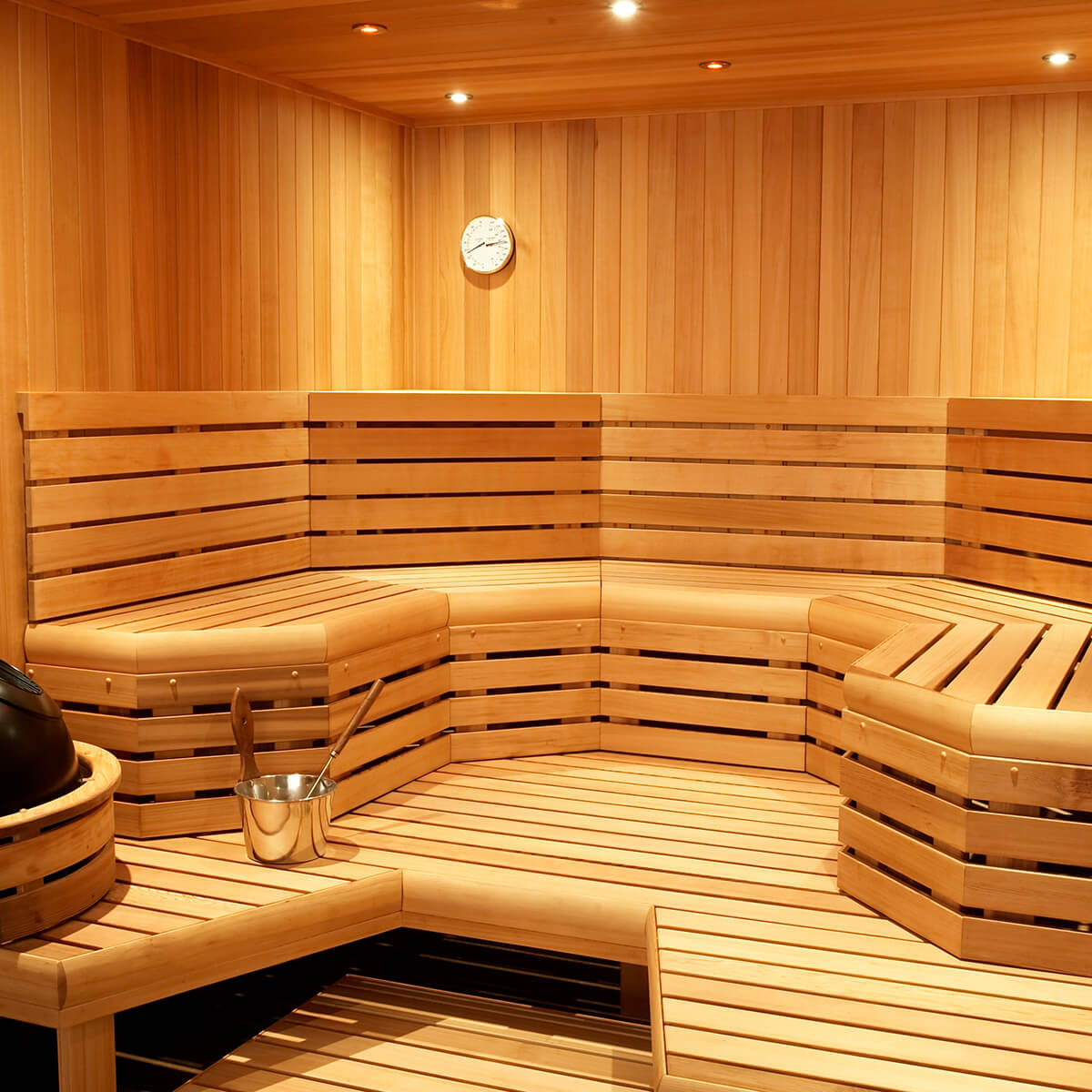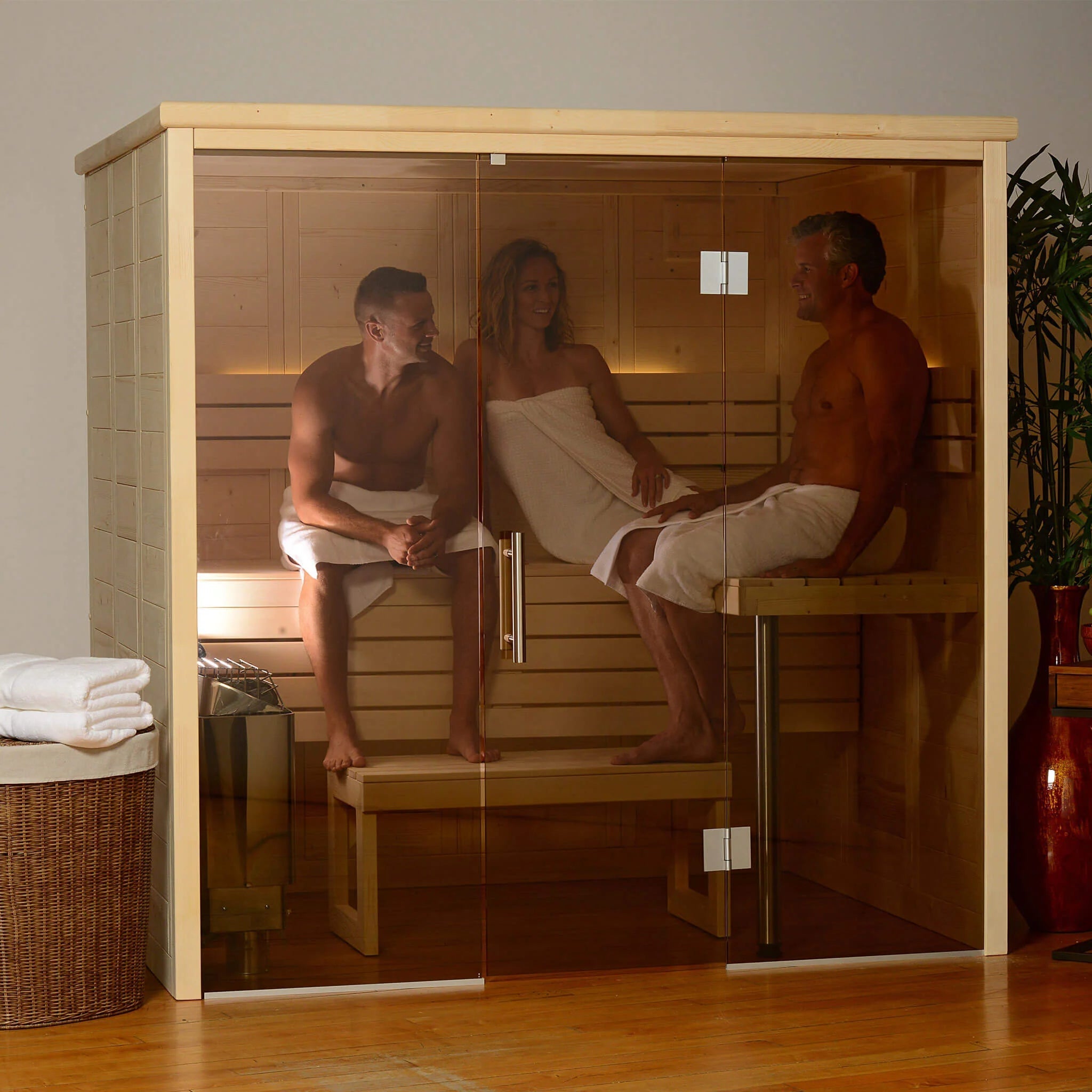The Greatest Guide To Traditional Sauna
The Greatest Guide To Traditional Sauna
Blog Article
The Single Strategy To Use For Traditional Sauna
Table of Contents7 Easy Facts About Traditional Sauna Described5 Easy Facts About Traditional Sauna ExplainedA Biased View of Traditional SaunaA Biased View of Traditional Sauna
A lot of the weight shed in a sauna is water loss and is re-gained upon rehydrating. However, without a question sauna can be a vital part of a healthy weight loss program. To check out the differences in between typical and IR saunas, I will separate these into verifiable, academic, and made distinctions.Thus, the best point in the saunawhich is at the ceiling directly above the sauna heateris usually between 185 and 190 F. Traditional Sauna. Claims that a standard sauna goes beyond 200 F is merely not real and not appropriate for electric saunas offered in the United States. The temperature for a far-infrared sauna is normally set between 120 and 140 F; however, unlike the standard sauna, the goal in and IR area is not to accomplish a high temperature level
Due to this, the temperature level distinction is nearly pointless, considering that profuse sweating causes both sauna kinds, yet the method of heating the body is various. In an IR sauna the bather will really feel hot and will certainly sweat profusely, however at much reduced temperatures. Therefore, if the goal is to invest longer time periods in the sauna, the IR sauna is a good selection.

All About Traditional Sauna
When the heat is attained, the elements cycle on and off to keep the high temperature. The majority of standard sauna customers take pleasure in pouring water over the rocks to develop vapor to increase sauna moisture degrees. The advantages of putting water over the rocks consist of: making the room much more comfy, dampening the nasal flows, and permitting the usage of aromatherapy by mixing necessary oils with the water.
In a far-infrared sauna, the warm front penetrate the body to successfully heat up the body and elevate the body core temperature level. To attain this increased temperature, Far-infrared emitters create infrared energy which is close to the exact same wavelength as that which the body normally emitsoften described as the "Vital Range" of 7 to 14 microns), so the power is well gotten by the body.
When the power gets in the body, it triggers the body temperature to enhance and eventually leads to sweating. In an infrared sauna review it is essential for the emitters/heaters to remain on practically regularly. Since there is no mass of rocks to keep heat, the sauna will cool down if the emitters closed off.
As mentioned over, the sauna bather in an infrared area intends to place himself before running emitters to obtain maximum gain from the warm. The heating time for the two rooms can be extremely different, depending on how the rooms are used. For a conventional sauna, a bather ought to allow 30-40 mins for click over here the room to achieve a wanted temperature and to properly pre-heat the rocks.
The Buzz on Traditional Sauna
A well built sauna will normally accomplish a temperature level of 150-160 F in concerning 30-40 minutes (Traditional Sauna). For hotter temperature levels, the room might need to warmth for a longer period. Once the space accomplishes established temperature level, the heating system will cycle on and off, generally running regarding 50% of the time. The protected walls and the heated rocks will keep the room hot and at secure temperatures.
To some, 15 mins was "lost" while the infrared power heated up the wood panels instead of heating a body, while others locate a pre-heated area to be more comfy and believe a raised starting temperature level is necessary to begin sweating. The size of recommended usage for each and every area is around the very same (10-15 minutes per session); however, as a result of the lower air temperatures and the ability to really feel the impacts of infrared warmth quicker than a traditional sauna, it is not unusual for a person to spend a total of 20-30 minutes in an infrared sauna.
Standard saunas often tend to be bigger (thus use more electricity) than infrared saunas, although typical saunas are definitely available in one and two individual dimensions as well. For a two-person conventional sauna, 5x6 or 5x7 dimension is most prominent. The leading bench can pleasantly seat two or official statement 3 individuals and is likewise long enough to relax during the sauna session.


The average cost per kWH of power in the united state is around $0.11, so a 4.5 kW heater will certainly set you back about $.50 to compete one hour, if the heating unit runs continuously for one hour. Normally a sauna heating system will certainly run for 75% of the initial hour and 50% of succeeding hours on given that the aspects cycle once the set temperature is achieved.
10 Easy Facts About Traditional Sauna Described
A 2 person far-infrared area is normally literally smaller sized than a conventional sauna, typically concerning 4' x 4' or smaller sized. The IR furnace is commonly 1.5-1.7 kW utilizing a 120 volt 15 amp plug-in solution. Considering that the area can be made use of faster than a sauna room, we will presume the space is utilized for to of an hour consisting of warmth up time.
Lastly, there is a seldom gone over distinction in the social experience between both rooms. While our culture has lost some of the social advantage of the conventional sauna experience, it can be extremely socially gratifying. From family time in the sauna, to heart-felt discussions with loved ones, to sauna partiesthe conventional sauna experience can lead to intimate socializing.
Many higher end infrared areas consist of tinted light therapy, sound systems and full-glass fronts.
Report this page